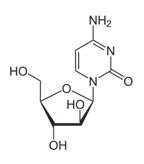Osteopontin Identified as Potential New Target in Treatment of ALL
Targeting the bone marrow–specific extracellular matrix osteopontin may be an effective strategy to increase the efficacy of chemotherapy in patients with acute lymphocytic leukemia, according to the authors of a recent study.
Targeting the bone marrow (BM)–specific extracellular matrix osteopontin (OPN) may be an effective strategy to increase the efficacy of chemotherapy in patients with acute lymphocytic leukemia (ALL), according to the authors of a recent study published online in Blood, the journal of the American Society of Hematology. “Previous studies have suggested that OPN may regulate the way tumor cells grow and spread throughout the body; however, its specific role in the progression of leukemia has not been well studied,” said Dorothy Sipkins, MD, PhD, department of medicine, section of hematology/oncology at the University of Chicago. “Our research aimed to understand the interactions of OPN and leukemic cells in the bone marrow niche, which may allow malignant cells to ‘hide’ in the dormant state and evade the effects of chemotherapy.”
Relapses in ALL are believed to be the outgrowth of minimal residual disease (MRD) that is not completely eliminated by chemotherapy. “Indeed,” noted the investigators, “it has been demonstrated that patients with the lowest levels of detectable MRD at complete remission have the best prognosis and least likelihood of relapse. Strategies to overcome resistance and reduce MRD may therefore have the potential to increase overall survival.”

Chemical structure of cytarabine (Ara-C)
The researchers used intravital microscopy to image the calvarial BM of xenografted mice to demonstrate that OPN is highly expressed adjacent to dormant tumor cells within the marrow. They found that inhibition of the OPN signaling axis significantly increased the leukemic cell Ki-67 proliferative index and led to a two-fold increase in tumor burden in treated mice. “Moreover,” noted Sipkins, “utilizing cell cycle–dependent Ara-C chemotherapy to produce minimal residual disease in leukemic mice, we showed that OPN neutralization synergizes with Ara-C to reduce detectable BM MRD.”
“Taken together,” the authors said, “these data suggest that ALL interacts with extracellular OPN within the malignant BM, and that this interaction induces cell cycle exit in leukemic blasts, protecting them from cytotoxic chemotherapy.…Our data reveal that the niche is ‘remodeled’ during leukemia progression, as host and tumor react to each other. In response to leukemic infiltration, host OPN production increases. At the same time, leukemia cells in OPN-rich BM regions secrete high levels of OPN that are incorporated locally into the extracellular matrix proteins.” These results suggest a “positive feedback loop” in which tumor-derived OPN can expand the quiescent niche and reinforce the dormant phenotype.
“Determining whether the capacity of blasts to adhere to OPN correlates with clinical outcomes in ALL is thus an interesting subject for future investigations,” the authors noted. Further studies are required, however, to assess the potential toxic side effects on normal stem cells that co-inhabit the BM microenvironment before it will be possible to develop a leukemia treatment that neutralizes OPN.
“Alternatively,” they concluded, “therapies could be designed to reinforce the interaction between BM OPN and leukemia cells in order to induce quiescence. Such an approach could be used to enforce a dormant state on leukemia in the BM, thus preventing or slowing disease progression.”
“This is an important target,” explained Sipkins, “because if we can disrupt the interaction between the OPN and the leukemic cells, we may be able to make this disease more responsive to chemotherapy. We’ve traditionally designed therapies that focus solely on the cancer cells, but future strategies for ALL and other blood cancer treatment may be enhanced by targeting not just the cancer cells but the environment with which the cells interact.”
“The continuing work will include investigations into the basic molecular interactions, preclinical analysis, and possible pharmacological interventions,” commented Trevor Price, coauthor and postdoctoral fellow in the section of hematology/oncology at the University of Chicago.
Newsletter
Stay up to date on recent advances in the multidisciplinary approach to cancer.
Highlighting Insights From the Marginal Zone Lymphoma Workshop
Clinicians outline the significance of the MZL Workshop, where a gathering of international experts in the field discussed updates in the disease state.